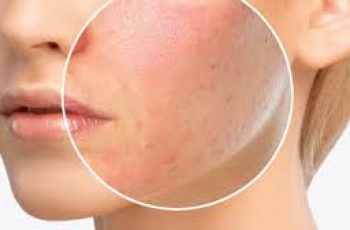
This skincare routine will change your face.
You’ve read beauty blogs and picked your favorite products – cleanser, toner, serum, moisturizer, eye cream – and if you use them every day, your skincare routine is perfect… right?
Sorry to break the bad news, but if you don’t know how to use these products in the right order, you should rethink your decision.
If we’re going to spend a fortune on skincare, we want the products to work to their full potential. The right order is crucial – don’t rush it.
To share our knowledge with you, we’ve compiled a comprehensive list of steps and products that are perfect for all skin types.
You don’t have to use everything on this list, but you should follow this order.
Daytime and nighttime routine
In simple terms: unless you use two products in each category, your morning and nighttime skincare routine is pretty much the same.
1. Cleansing Products
For the products to work, the skin needs to be fresh and new – that’s where cleansing comes in.
Everyone should cleanse themselves in the morning and especially at night. When you step out the door, your face is covered not only with makeup (if you wear makeup), but also with dirt.
Even if you’re less exposed to air at night, your skin can sweat and accumulate bacteria while you sleep.
How does it work?
Wash your hands.
Massage the cleanser gently into your skin for about 1 minute.
Rinse off with warm water.
Pat your skin dry with a clean towel.
Pro tip: Try double cleansing at night. First, remove your makeup using a non-comedogenic oil (jojoba works well) or an oil-based cleanser. Then use a water-based cleanser.
Water-based or oil-based cleansers
Oil-based products are best for removing makeup and sunscreen residue, while water-based products are best for removing dirt and sweat.
“Choosing the right cleanser depends on your skin type. It’s important to choose the right one for you,” explains Ophelia Veraitch, a dermatologist at the Cranleigh Clinic.
“For example, if you have acne, you should avoid soap-based or foaming cleansers because they increase sebum production.”
2. Toners and serums
Face toners come in a variety of formulas. Depending on the product, they can remove dead skin cells, unclog pores, brighten your skin, and restore its pH balance.
“If you want to use a product with active ingredients and moisturizers, a toner can remove all cleansing products and leave your skin feeling fresh,” says Dr. Villachi.
Serums are similar to toners, but are lighter in texture and are usually used to moisturize.
Generally, toners and fragrances are optional. Depending on your skin type, the results may or may not be visible.
Pro tip: For oily skin, an astringent toner is recommended. If you use hyaluronic acid later, use a hydrating toner.
3. Eye creams
Eye creams can fight fine lines and dark circles. “Use a thinner eye cream here because the skin around the eyes is thinner,” advises Dr. Villachi.
Eye creams are an optional step in your routine because they are usually very expensive. Using an eye serum can achieve similar results. However, make sure the ingredients are not too harsh.
How does it go?
Because it is a very specific area, you don’t need much. Apply a small amount to your fingertips (use your ring finger) and gently pat around your eyes until absorbed.
Pro tip: If your eye cream contains retinol and you use it in the morning, follow up with sunscreen and reapply throughout the day.
4. Serums, including acids and retinols
Serums contain high concentrations of ingredients, such as antioxidants and/or acids, that promote cellular repair and protection.
They are particularly effective for repairing sun-damaged skin and even skin tone.
However, serum selection also depends on the active ingredients you used previously in the toner/serum phase.
Active ingredients are anything that can transform the skin, such as acids, retinols, and vitamins.
“When you use a product with medicated ingredients, you need to wait a few minutes before applying the next product,” adds Dr. Villachi.
“Otherwise, the active ingredients become diluted and lose all their effectiveness.”
Day serums
Your daily serum should focus on hydration and protection. Day serums often contain acids such as hyaluronic acid, salicylic acid, and L-ascorbic acid (vitamin C).
These ingredients promote cell turnover and regeneration, helping to improve everything from spots, wrinkles, skin tone, and scars.
Night Serum
Your night serum should focus on repairing and renewing skin cells. You can use an acid serum at night, but if it contains retinol, use it.
“Retinol should be used at night because it makes the skin more sensitive to the sun,” explains dermatologist and creator of Altruistic Sunscreen, Dr. Andrew Birnie.
Retinol is a synthetic form of vitamin A. This powerful ingredient stimulates cell production and fights signs of skin aging.
When using retinol, it’s recommended to start slowly. “Retinol products are more likely to cause irritation and require increased use,” says Dr. Birnie.
“Use it every few days or every other day, then work your way up to daily.”
Pro Tip: Start with 0.3% to 0.5% retinol, Dr. Villachi suggests. This may be enough for your skin. Then increase the amount to 1%.
5. Topical Treatments
Topical treatments specifically target acne, dark spots, and blemishes. If your skin is clearer than Caribbean water, go for it!
Pro Tip: While some topical treatments are great for morning use, many work best at night because your body begins to repair itself while you sleep.
How’s it going?
If your topical treatment contains salicylic acid or lactic acid, focus on the T-zone, Dr. Villachi advises. Or just where you have acne.
The formulas are relatively gentle and can be used anywhere without any problems.
Avoid applying the product around your eyes, she adds.
6. Moisturizer
No matter how many serums you have, “everyone can benefit from using a moisturizer,” Dr. Villachi says. It’s important to protect the skin’s natural barrier and retain moisture.
However, which formula is best depends on your skin type. For dry skin, ointments are a good choice.
However, if you have oily skin or are prone to rosacea or acne, you’ll be better off with a cream, she explains.
7. Facial Oil
Your skin already produces its own oil, called sebum. Depending on your skin type, you may not need a facial oil.
Dr. Villachi doesn’t recommend this approach to her clients, as it has caused more problems than benefits in her practice.
However, everyone is different. People with dry or dehydrated skin may find that facial oil products stimulate sebum production, especially when it comes to moisturizing and protecting the skin’s natural barrier.
Typically, these products contain a variety of different oils.
However, the most popular ingredients include squalane, jojoba, marula, argan, and rosehip oils: all of which are rich in valuable antioxidants and anti-inflammatory properties.
8. Sunscreen (for the day) or moisturizer (for the night)
Sun protection is the most important step in your daily routine. Not only does it prevent sunburn (which can eventually develop into skin cancer), it also prevents cumulative sun damage.
“Every time you go out, a little bit of sun or UV rays hits your skin,” explains Dr. Burney. “It accumulates throughout your life.”
This can lead to cancer cells, sun spots, wrinkles, and signs of aging on the surface of your skin.
Night cream
A night cream is essentially a nourishing moisturizer. “It hydrates the skin and helps reduce fine lines,” says Dr. Villach.
A night cream is optional, but it’s something to consider starting in your 30s.
“As we age, it’s important to use a night cream,” says Filach. “As we age, sebum production decreases, so we need extra hydration.”


